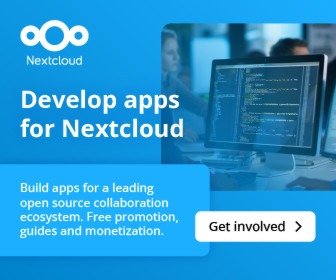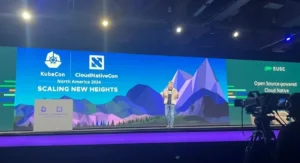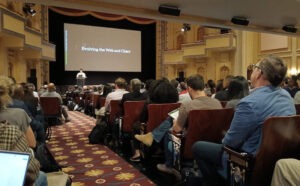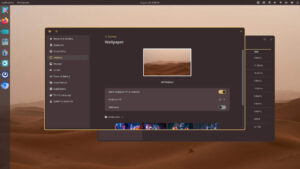In addition to witnessing the unveiling of RHEL 10, FOSS Force was able to get Red Hat CEO Matt Hicks to weigh-in on the open source AI controversy.
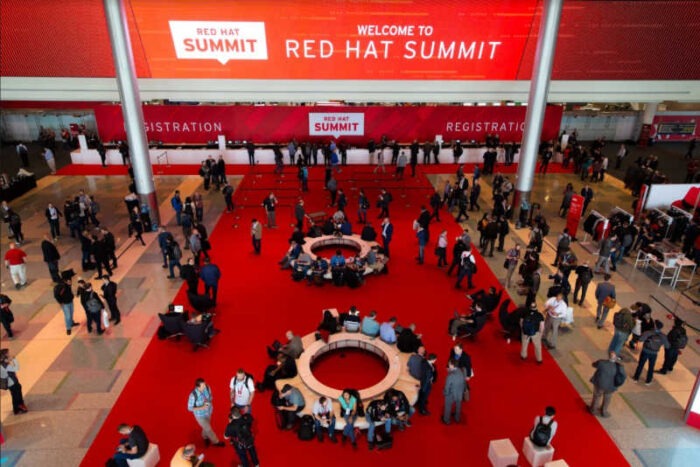
On Tuesday morning in Boston, when the doors opened on Red Hat Summit 2025, they opened onto a conference where AI — along with every adjective that can be attached to it — was front and center, even taking precedence over the announcement of the release of RHEL 10, the latest version of its flagship moneymaker, Red Hat Enterprise Linux.
Indeed, even the announcement that the much-anticipated RHEL 10 had officially arrived (it had been unofficially released to customers nearly a week ago) focused almost entirely on its AI capabilities, but even before that, Red Hat CEO Matt Hicks set the tone with a show-opening keynote that focused on… what else, AI.
“Last year, we talked about the amazing potential of AI, how open source could positively impact it, and how you could start experimenting with this transformative technology,” he said to begin his talk. “Since then, the pace has only accelerated, to the point where we are now operating in a space between the known and this new world that is rapidly emerging.”
AI-Focused Product Updates
Hicks’s keynote was followed by keynotes from all the usual suspects. CTO Chris Wright, Chief Product Officer Ashesh Banani, and Brian Stevens, in his new role as AI Chief Technology Officer, were all on hand. Their talks focused almost exclusively on AI, a focus that extended to the customer and partner success stories from AMD, Ford Motors, Google Cloud, Emirates NBD, Intel, Meta, NVIDIA, and Turkish Airlines.
Even the product updates were primarily focused on AI, starting with the unveiling of Red Hat AI Inference Server, a high-performance platform designed to streamline and accelerate the deployment of generative AI models across any infrastructure, be that on-premises, hybrid, or multicloud. This platform supports “any AI model running on any accelerator, in any environment.”
Another unveiling was Red Hat Advanced Developer Suite, an addition to Red Hat’s Kubernetes-powered cloud application platform, OpenShift. This new addition is designed to improve developer productivity and application security with enhancements that Red Hat hopes will speed the adoption of its AI technologies. Also new in OpenShift space is Red Hat OpenShift Lightspeed, made “to Supercharge Hybrid Cloud Productivity with Generative AI.”
Red Hat’s pride and joy, RHEL 10, is pretty much now the core of Red Hat’s AI strategy, as it serves as the foundation for most of its AI solutions, including OpenShift AI and RHEL AI. The platform is optimized for developing, testing, and running large language models, and is essential for scaling AI-enabled applications into production environments.
Even product announcements that aren’t overtly AI-related, such as Edge Manager and Red Hat In-Vehicle Operating System, have AI components.
Red Hat’s AI Approach
It would be difficult to walk away from Tuesday’s keynotes without thinking that Red Hat believes it has the opportunity to position itself as something like the essential AI platform company — and it also seems possible that might turn out to be true. Hicks’s opening talk made it obvious that the company has a firm grasp on AI, not only of the technology, but also of its philosophical and business aspects.
Here are a few takeaways of Red Hat’s approach to AI, taken from Hicks’s keynote:
- AI Is at a Transformative Crossroads, Mirroring Open Source’s Early Days: Hicks drew a strong parallel between the disruptive emergence of AI today and the arrival of open source software decades ago, pointing out that both generated excitement and fear, and have been responsible for fundamental changes.
- Red Hat Sees AI as an Amplifier, Not a Replacement, of Human Expertise: This was stressed several times during the keynote. AI should not be seen as a threat to human value or identity, but as a tool to enhance and extend human skills and creativity, in much the same way that open source has done.
- AI and Open Source Both Remove Barriers and Unlock Human Potential: Considering that many people think that exactly the opposite will happen, this assertion is something of a bugaboo. Hicks highlighted that both AI and open source democratize access to knowledge and skills, paving the way for broader participation and innovation regardless of background or geography.
- Navigating the Tension Between AI and Open Source—Especially Around IP: Hicks acknowledged that there are real challenges and tensions between AI and open source, especially around intellectual property, attribution, and the ethos of sharing, but urges the open source community to focus on shared values and opportunities.
Hicks on Open Source AI
During the morning keynotes, almost everyone who spoke mentioned open source as being key to making AI work in any meaningful way. This was a little puzzling, given that so far no one has been able to come up with an open source AI definition that is both practical and true to open source — or free software — principles.
At a press event that followed the keynotes, FOSS Force addressed the issue by asking this question to the panel:
“We’ve been hearing a lot this morning about the importance of open source to AI development, but we really haven’t figured out exactly what open source AI looks like, other than, Llama isn’t it and OSI’s Open Source AI Definition is also unsatisfactory. Does Red Hat have a solution to this conundrum?”
In my opinion, the best — and perhaps most honest — answer came from Hicks, who pointed to the debate in the very early days of the internet around the question of giving money to someone online in exchange for goods.
“The answer was, ‘No, I’ve never met them. That doesn’t represent how commerce is done. I will never do it,'” he said. “Then eBay sort of cracked that code of trust, and it unlocked a whole world of commerce on the internet. I feel like we’re in a sort of similar spot. These models are accessible, but I don’t know the data that went into them, so I’m asking you to open all the data. A lot of the providers are not going to do that.
“How do we find that brokerage of trust with it?” he asked. “It could be in some of the layers or frameworks, or it could be in other areas, but I think until we have that we will continue to have this. We know we trust open. We know when it’s not open, it’s hard to trust. Is there another substitute in there where we can achieve that, but we haven’t figured it out yet?”
Christine Hall has been a journalist since 1971. In 2001, she began writing a weekly consumer computer column and started covering Linux and FOSS in 2002 after making the switch to GNU/Linux. Follow her on Twitter: @BrideOfLinux

